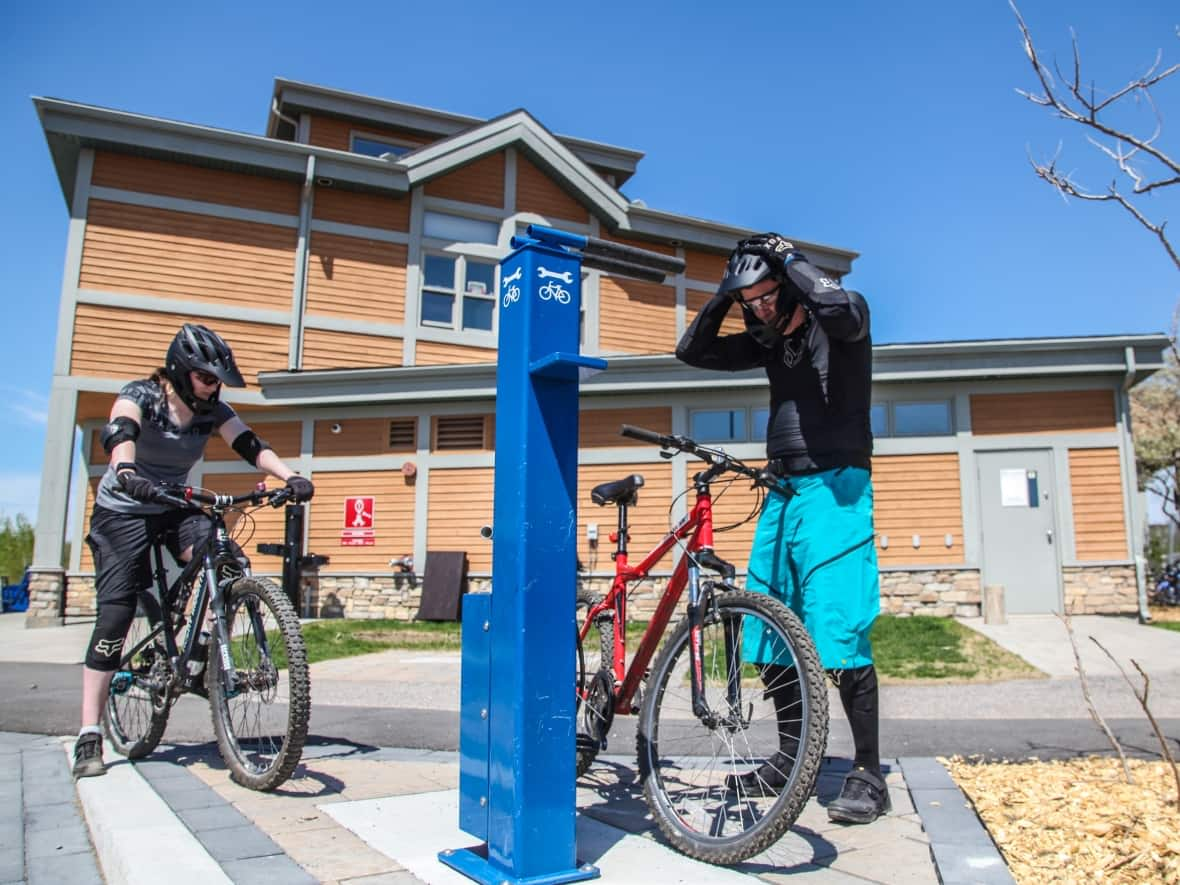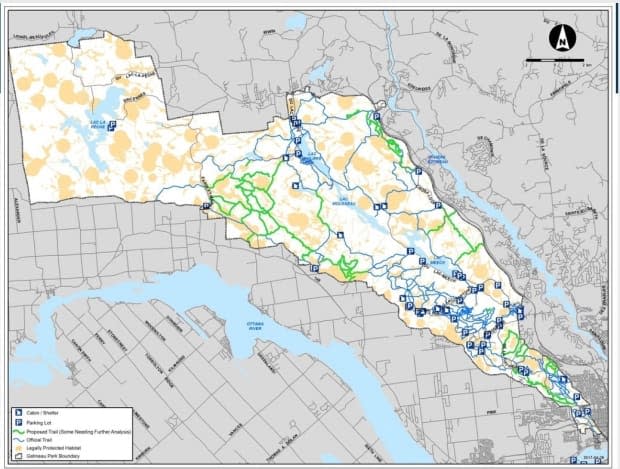NCC 'officializing' rogue trails in Gatineau Park

After years of warning visitors of Gatineau Park to stay on the trail, the National Capital Commission (NCC) has begun converting many so-called rogue hiking and cycling paths into legitimate routes.
Beyond the 200 kilometres of official forest routes maintained by the NCC, park managers estimate there are more than 300 kilometres of unofficial trails.
The number of those trails has snowballed in the era of mobile mapping apps like AllTrails, and beginning in 2017, the NCC began to take an "if you can't beat them, join them" approach.
Off-piste misadventures have become common in Gatineau Park in recent years.
Last November one hiker was injured on a steep cliff face and needed to be rescued by firefighters from several of the municipalities that border the park.
Not long after, another visitor ventured off a designated path, became lost and required rescuing.
"It's always complicated, and it's at night," said Chelsea Fire Department Chief Charles Ethier, who pointed out the risk to rescuers.
"There's a chance of falling, so it's always a difficult intervention."
Even if a lost hiker's phone does have reception, merely sending co-ordinates to rescuers may not help if there's no record of the trail the visitor followed into their predicament, said Ethier.

Pierre-Olivier Dorego, outdoor recreation manager for Gatineau Park, admitted the proliferation of new paths through the forest by users of mapping apps has caused park authorities new headaches.
Still, planners have tried to take a philosophical approach.
"We have to keep in mind that these trails are there for a reason," said Dorego, who added DIY trails often connected residential neighbourhoods to the park, or offered a recreational experience not available elsewhere.
Beginning in 2017, the NCC held public consultations with users about which unofficial trails deserved to be made official.
Hang-gliders, equestrians, snowmobilers, hikers, cyclists and other groups weighed in during a series of public meetings.
In the end about 100 kilometres of the 330 kilometres of rogue routes were accepted, often with modifications. The DIY trails were evaluated on the basis of their recreational value and environmental impact.

Dorego said some proposed routes had to be immediately ruled out of bounds when they charted courses across sensitive and legally protected habitats for animals such as peregrine falcons and western chorus frogs, and plants such as American butternut.
Others caused unacceptable fragmentation in the range of larger mammals like deer.
But in many other cases, the park has allowed users to take the lead.
"We're hoping that these provide the experiences that people are looking for on the unofficial trails and we will be able to close the unofficial trails that are problematic from a safety and environmental point of view," Dorego said.
Phase 1, completed in 2019, made about 14 kilometres of trails official. It brought trails 41, 42, 43, 66, 67, 68, 76, 77, 79 and 80 in Gatineau and Chelsea into the NCC canon.
Phase 2 added 53B, 58, 59 and 72B — about 17 kilometres in total — in the Wakefield area.
WATCH | Why the NCC is giving official status to some rogue Gatineau Park hiking trails
Volunteers have donated thousands of hours of their time to trim, lop and blaze the paths that got the NCC nod.
Dorego estimates that by summer 2024, 100 kilometres of "crowdsourced" routes will show up on official NCC maps.
It's music to the ears of Patrick Hannan, who confessed to riding his mountain bike on "unofficial trails" and frequently running into conflict with hikers who were also on the out-of-bounds routes.
"With officializing them, they know it's a shared trail. I get less insults or remarks," he said.


